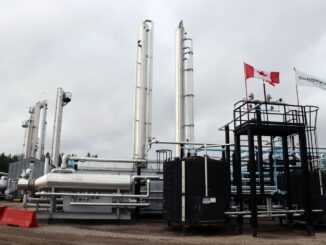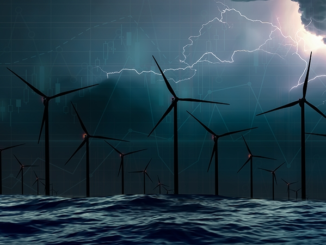
A decade after a much-hyped liquified natural gas (LNG) boom fizzled out, Canada is poised for a second chance to cement itself as a significant player in the global LNG market. The recent milestone of LNG Canada’s first export shipment from Kitimat, British Columbia, marks a pivotal moment for the country’s energy ambitions. Despite a strong push toward green energy policies, Canada’s LNG sector is gaining momentum, with several projects in development and a growing global appetite for this transitional fuel. However, challenges remain, from environmental opposition to market dynamics and the U.S.’s dominant position in LNG exports. This article explores Canada’s current LNG landscape, the projects driving its resurgence, and the tension between fossil fuel development and the nation’s green energy commitments.
Is Oil & Gas Right for Your Portfolio?
LNG Canada: A Milestone in Kitimat
The Shell-led LNG Canada facility in Kitimat, B.C., has emerged as the cornerstone of Canada’s LNG aspirations. After nearly seven years of construction, the $40-billion project produced its first batch of LNG for export in June 2025, with the GasLog Glasgow tanker setting sail for Asia, marking Canada’s entry into the global LNG market. The facility, backed by Shell, Petronas, PetroChina, Mitsubishi, and KOGAS, is the first large-scale LNG export terminal in Canada and the only one on North America’s Pacific coast, offering a competitive edge with shorter shipping times to Asian markets.
LNG Canada’s initial production comes from Train 1, which has a capacity of 6.5 million metric tonnes per annum (mtpa), though it’s currently operating at reduced capacity due to technical issues. When fully operational, the facility is expected to reach 14 mtpa, equivalent to about 90% of the LNG Europe purchased from Russia in 2024. This capacity could significantly reduce Canada’s reliance on U.S. markets, where it currently exports around 8.6 billion cubic feet per day of gas via pipelines. Shell and its partners are already eyeing an expansion, with a final investment decision expected in 2026 to double the facility’s capacity.
The project’s success is a testament to perseverance, having overcome years of delays, regulatory hurdles, and environmental opposition. However, it also underscores the economic potential of LNG, with the project supporting rural communities in northeastern B.C. and northwestern Alberta through development in the gas-rich Montney formation.
Other LNG Projects in the Pipeline
Beyond LNG Canada, several other projects are fueling optimism about Canada’s LNG future, representing a potential $109 billion in investment. Key among them are:
- Cedar LNG: A collaboration between Pembina Pipeline Corporation and the Haisla Nation, Cedar LNG is a $3-billion floating LNG facility in Kitimat. It’s the first Indigenous-owned LNG export facility in the world and is expected to be operational between 2027 and 2028. The project has garnered significant support from Indigenous communities, reflecting a growing trend of equity partnerships in resource development. However, it still requires federal approval, and environmental concerns linger.
- Ksi Lisims LNG: Proposed for the Nisga’a community of Gingolx, B.C., this floating LNG terminal aims to export gas to Asia. The project, a joint venture between the Nisga’a Nation and Texas-based Western LNG, is still undergoing environmental assessment. It has received backing from the Nisga’a Nation but faces opposition from groups like the Gitanyow Hereditary Chiefs, who cite risks to salmon habitat and climate impacts.
- Woodfibre LNG: Located near Squamish, B.C., this smaller-scale LNG project is also slated for completion between 2027 and 2028. It aims to capitalize on the growing demand for LNG in Asia, though it has faced scrutiny over its environmental footprint, particularly from fracking-related methane emissions.
These projects, if realized, could significantly boost Canada’s LNG export capacity. However, they face a familiar set of challenges: environmental opposition, regulatory delays, and market competition. The U.S., with its established LNG infrastructure, leads Canada by a wide margin, and some analysts warn that Canada may have missed its window to become a dominant player.
Green Energy Policies and Fossil Fuel Ambitions: A Delicate Balance
Canada’s LNG resurgence is unfolding against the backdrop of aggressive green energy policies championed by both federal and provincial governments. The Liberal government under Justin Trudeau has prioritized climate goals, including net-zero emissions by 2050, which has led to policies that some argue hinder fossil fuel development. For instance, critics point to stringent regulations and carbon pricing as barriers to LNG expansion, while the previous government’s skepticism about the business case for LNG facilities delayed progress.
Yet, LNG is often touted as a “transition fuel” that can displace coal in markets like Asia, potentially reducing global greenhouse gas emissions. Shell Canada’s country chair, Stastia West, emphasized this at the Global Energy Show in Calgary, arguing that LNG represents “cleaner energy around the world.” Some experts, like Kent Fellows from the University of Calgary, agree that replacing coal with LNG could yield emissions reductions, though the benefits are debated. Critics, including environmental groups and physicians like Dr. Melissa Lem, counter that LNG production, particularly fracking, is resource-intensive and emits methane, a potent greenhouse gas.
This tension raises questions about Canada’s commitment to fossil fuels. On one hand, the government sees LNG as a way to diversify energy exports and reduce dependence on the U.S., especially amid trade uncertainties. B.C. Premier David Eby has defended projects like the Prince Rupert Gas Transmission pipeline, citing economic benefits and interest from Japanese investors. On the other hand, environmental opposition and green energy commitments could slow progress. The Gitxaała Territorial Management Agency, for example, has raised concerns about LNG shipments transiting their territory, and conservation groups argue that LNG expansion undermines Canada’s climate goals.
Speculation: Will Canada Stay the Course?
Canada’s commitment to LNG development appears strong but not unwavering. The economic case is compelling: LNG projects promise jobs, Indigenous partnerships, and a foothold in the lucrative Asian market. Posts on X reflect enthusiasm, with users like @BrianJeanAB and @christyclarkbc hailing LNG Canada as a nation-building milestone. However, the political landscape is fraught. The federal government’s green agenda could lead to stricter regulations or reduced support for new projects, especially if global demand for LNG softens due to market gluts, as noted by energy analyst Clark Williams-Derry.







